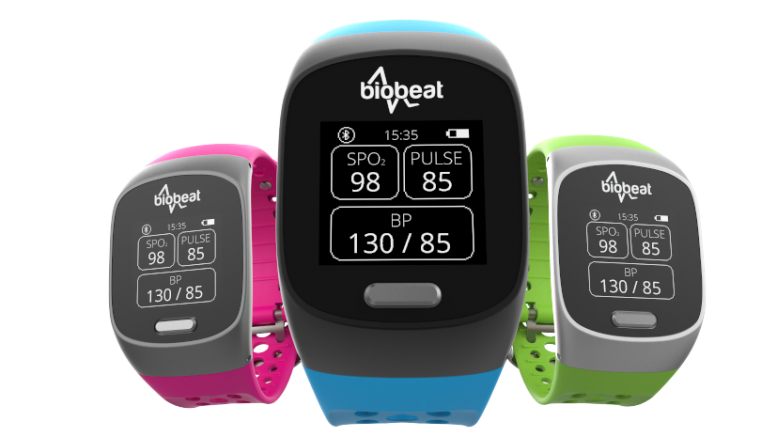Wearable patient monitoring developer Biobeat has revealed details of a new peer-reviewed study that substantiates the use of a wearable photoplethysmography-based (PPG) device to help accurately monitor patient vitals, even during significant hemodynamic changes.
The research which used a swine model study compared the hemodynamic parameters during controlled hemorrhagic shock to invasive arterial line (AL) and Swan-Ganz (SG) catheter monitoring methods.

The study, “Wireless, Non-Invasive, Wearable Device for Continuous Remote Monitoring of Hemodynamic Parameters in a Swine Model of Controlled Hemorrhagic Shock,” published in Scientific Reports, measured the heart rate, systolic and diastolic blood pressure and cardiac output of 11 pigs using Biobeat’s wearable non-invasive remote monitoring device and traditional AL and SG catheter invasive methods. Hemorrhagic shock was induced in the pigs by bleeding 35% of their blood volume, followed by a post-bleeding follow-up phase. The animals were monitored continuously by all three methods for a median period of 447 minutes.
“Accurate and continuous monitoring of critically ill patients is frequently achieved using invasive catheters, which are technically complex and can potentially lead to local injury and infection,” said Prof. Arik Eisenkraft, the study’s principal investigator and CMO of Biobeat. “During periods of induced hemodynamic instability – in which traditional non-invasive devices often struggle to monitor vitals – Biobeat’s PPG-based device succeeded in continuously providing accurate measurements. This provides substantial evidence demonstrating that novel PPG-based devices can also be used for patient monitoring, even when patients experience drastic vital sign variation including significant hemodynamic changes.”
Study findings showed unprecedented monitoring capabilities for heart rate, blood pressure, and cardiac output measurements, including hemodynamic deterioration in drastic situations. The overall mean values for the invasive measurement were highly comparable. There also were significant (p<0.001) and strong correlations between methods of measurement of BP during all phases of the study. Correlations between the wearable monitor and the invasive methods were significant (p<0.001) during all periods, and correlations for changes in cardiac output, systolic and diastolic blood pressure were significant (p<0.001) and strong (r>0.88). Notably, the comparison between AL and SG catheters with Biobeat’s non-invasive PPG device showed first-of-its-kind accordance in relation to blood pressure and cardiac output.
Overall, these findings indicate that a PPG-based device like Biobeat’s can be helpful in accurately and continuously tracking changes in patient conditions, even in clinical settings where patients experience notable hemodynamic changes.
“There is a clear need for reliable non-invasive technology capable of advanced hemodynamic monitoring within the medical space,” said Arik Ben Ishay, CEO of Biobeat. “Measurements obtained from the study indicated that Biobeat’s PPG-based device can offer a high level of reliability compared to existing standard invasive techniques, even in circumstances of moderate to severe and unstable hemorrhagic shock. This further proves that Biobeat’s PPG-based monitoring device can provide continuous non-invasive monitoring to support timely care, which may help health teams minimize morbidity and mortality without compromising measurement accuracy.”




